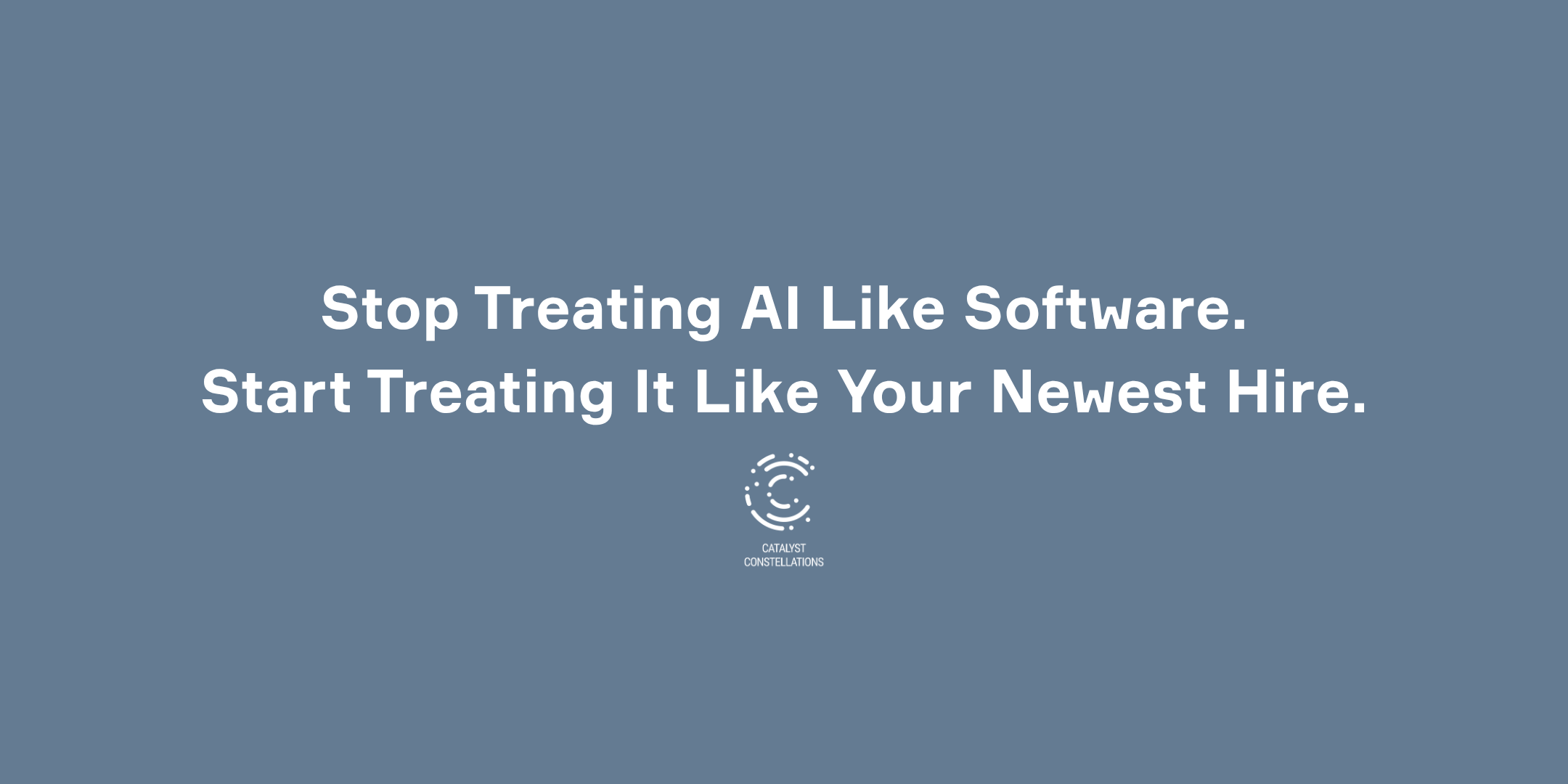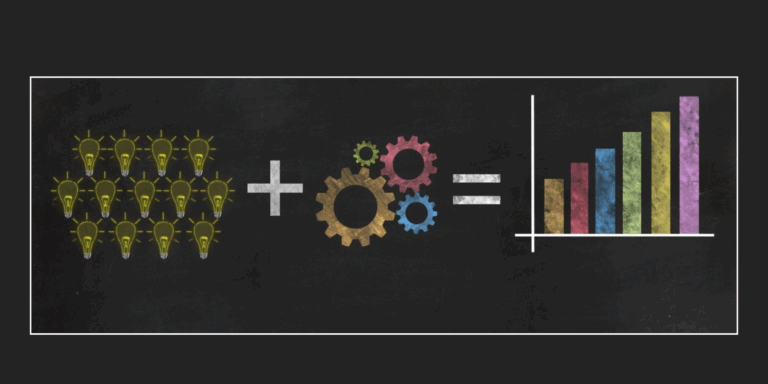Who’s the New Guy?
AI isn’t a magic wand or silver bullet. It’s your newest team member, one that happens to be lightning-fast, infuriatingly literal, and prone to making things up when confused.
Last month, the Catalyst Leadership Trust assembled to discuss our partner Samudra Group’s AI Odyssey report, diving into how organizations can actually thrive in the age of AI. The session brought together C-suite executives, industry leaders, and transformation experts to uncover what’s really working.
The consensus was clear: to realize AI’s value, treat it like what it increasingly resembles: a new type of employee. That means onboarding it with intention, structure, and clear expectations.
Set Up AI’s Workspace
For AI, this isn’t about desk assignments. It’s about ensuring the data your AI will use is actually usable. If your data systems are chaotic, AI will be confused. When confused, it hallucinates or shuts down entirely.
The reality: AI governance adds 10-20% to traditional oversight budgets. Factor this into your business case now.
Action: Start with one clear use case, like customer service for a single product line. Build solid data architecture, access controls, and tagging around that specific workflow.
Give AI a Job Description
You wouldn’t hire an executive and say, “figure it out.” Yet that’s how many companies deploy AI, without defined use cases, boundaries, or success metrics.
Accenture got this right with their AI-powered Proposal Builder. Clear mission: reduce proposal creation time from hours to minutes while improving customization. With that focused scope, they could set goals and coach the system toward success.
Result: 50% productivity boost with measurable improvements in brand consistency and personalization.
Action: Define what AI owns and what it doesn’t. Set boundaries, deliverables, and dependencies just like any critical role.
Put AI on Cross-Functional Teams
AI works best as a collaborator, not a solo performer. Research shows human-AI teams outperform both humans alone and AI alone by 12-17%.
Colgate-Palmolive pairs product teams with AI systems to review market data for new opportunities. The humans aren’t just auditing, they’re actively shaping outputs. The result? Broader innovation funnels and faster time-to-market, with zero AI disasters.
Action: Reconfigure teams so AI isn’t sitting alone in a tool stack. Assign it to cross-functional units where humans validate, improve, and direct its work.
Measure AI Like You Measure People: with KPIs
ROI and internal AI adoption rates are good metrics. But, if AI is an employee, you should measure performance with business contributions such as output quality, accuracy, and speed of service.
Swedish fintech Klarna integrated AI across innovation teams with shared KPIs. Results? 60% faster go-to-market cycles and 59% faster innovation rates.
Action: Set performance metrics that measure real business impact. Evaluate and iterate like you would with any high-potential hire.
The Real Transformation Ahead
AI is powerful, but it’s not plug-and-play. Organizations that onboard AI with the same rigor they apply to executive hires will see the real returns: smarter teams, faster execution, and better outcomes.
But here’s what we’re learning: the technical implementation is just the beginning.
In a recent workshop with healthcare executives, we asked a simple question: “What percentage of AI transformation is cultural versus technical?” The overwhelming response: 80% cultural, 20% technical.
So while you’re onboarding AI as your newest hire, ask yourself: How will you help your existing team embrace this new colleague? How will you maintain customer confidence as AI becomes part of their experience? And most critically, how will you ensure this transformation accelerates your boldest strategic goals rather than just adding another layer of complexity?
#AITransformation #ExecutiveLeadership #OrganizationalChange #Innovation #FutureOfWork




